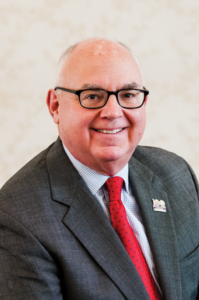So it must be that many years ago—perhaps decades or even centuries ago—an ill-tempered character, with a chip on their shoulder about the encroaching Industrial Age, must have bestowed upon us denizens of this century the tried-and-true curse that we may “live in interesting times.” So interesting are these times that I struggled all month to decide what to write for this month’s issue—there is so much from which to choose. I settled upon an expanded discussion of artificial intelligence (AI), only to discover that AI was also on the minds of International Executive Officer Luc Fortin and Director of Government Affairs Ben Kessler. Regardless, for the 11 members who faithfully read this monthly column, I shall now add my own spin to the AI discussion.
Why would anyone want AI?
Let’s start with a small discussion about capital, capitalism, and the capitalist economy. In a capitalist economy, the role of capitalism is to aggregate capital in the form of profits. Those profits are gained when the cost of the commodity, i.e., the cost of the raw material and the cost of the labor to transform it into something of value to others, is less than the price for which the thing of value can be sold.
In the time when our present-day curse was laid upon us by that ill-tempered character of yore, this was a fairly simple equation: $ales price minus ($raw material + $labor) equaled profit. Before companies existed, that profit flowed back to the laborer. When the laborer realized that they could step away from the actual labor and entice other laborers to produce the same thing—perhaps for less cost, or perhaps for the product to be sold at a higher price—the idea of a company was born, thus amplifying the profit motive and setting up the dynamic within which we all live today—produce a thing of value for less cost and sell it for a higher price.
And that goal feeds upon itself year after year. Indeed, when a corporation reports that it lost a billion dollars in sales, it’s not saying that $1 billion of its money went out the window, it’s only saying that it didn’t match or exceed the sales of the previous year. Capitalism exists only to grow capital.
That’s where AI comes in. AI is not neutral—it is built to serve capital, not people (no matter what your phone tells you).
Technological change under capitalism is never neutral. It’s driven by the profit motive, and moderated only by the balance of class power and the unruliness of labor. AI, with all its bells and whistles, is no different. It’s here not to expand democracy or improve social well-being, but to automate management, speed up surveillance, and hide exploitation behind the veil of innovation.
AI isn’t loved for its creativity; it’s loved because it replaces people—the perfect servant of capital in its purest form. AI isn’t just a system—it’s the embodiment of a future where labor is optional, cultural landscapes are flattened, and government is outsourced to Skynet.
Against this backdrop, read Kessler’s account of the firing of the head of the US Copyright Office right after having issued a report on generative artificial intelligence (GAI) vis a vis the fair use doctrine. Big tech wants to untether GAI completely from the limitations imposed by fair use—which is to say that your face, voice, instrumental sound, writing, composition, or improvisation would no longer be yours.
Then, put that together with Fortin’s examination of AI in today’s music industry to get a flavor of where the forces currently in control see the live, breathing musician’s role in the music industry.
And then, think about whether the picture that those two columns paint matches your professional and artistic vision of the future of music.
Read More

